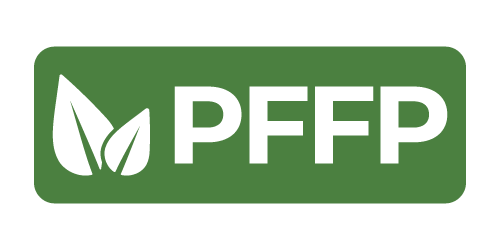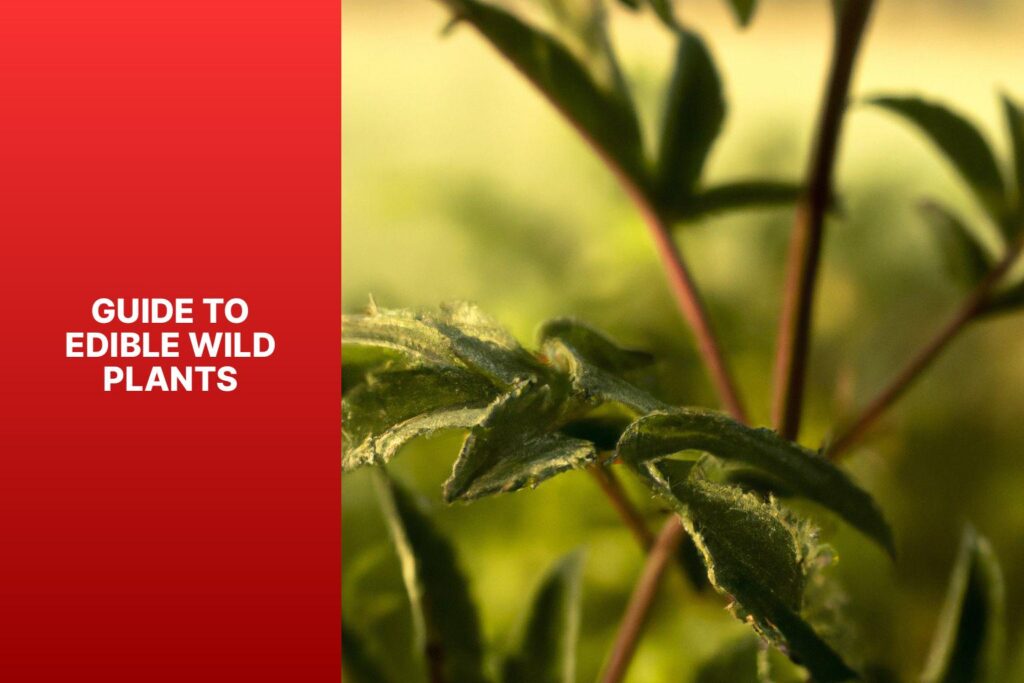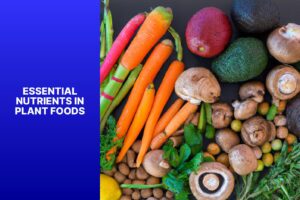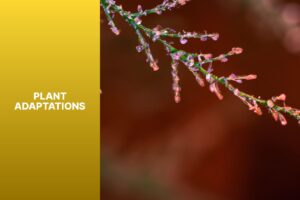Indulge in the exciting experience of exploring nature’s bounty with edible wild plants! Found in forests, meadows, and even backyards, these plants offer a range of flavors and nutritional benefits.
Understand the different types of edible wild plants and be careful while harvesting them. Accurately identify them through field guides or expert advice. Avoid any poisonous look-alikes.
Harvest sustainably – take only what you need, allowing the plant to propagate for long-term survival. Start with plentiful and fast-growing species before expanding your foraging repertoire.
Cooking techniques vary – some may require boiling or blanching to remove bitterness or toxins. Others might benefit from marinating or sautéing to enhance flavors. Research recipes and experiment with various cooking methods.
Connect with like-minded individuals who appreciate nature’s bounty by joining local foraging groups or workshops. Safety should always be a priority – if in doubt, consult a healthcare professional immediately.
Fully enjoy the experience of edible wild plants responsibly and intelligently. Nature’s pantry is now open, waiting to be discovered!
Benefits of Foraging for Edible Wild Plants
Foraging edible wild plants has advantages beyond just the thrill of discovering nature’s gifts. Let’s take a look at some of the key benefits:
- Nutrients: Wild plants often have more vitamins than cultivated crops, making them a great choice for a healthy diet.
- Savings: Foraging gives free, nutritious food, lessening grocery costs over time.
- Sustainability: Collecting wild plants encourages sustainable food practices by using naturally available resources without stressing agricultural systems.
- Nature Connection: Foragers develop a deep bond with their environment, noticing seasonal changes and the fragile balance of ecosystems.
- Mental Health: Foraging can be both physically and mentally refreshing, bringing a sense of achievement and peace.
- Cultural Heritage: Exploring native edible plants can deepen our understanding of traditional dishes and cultural backgrounds.
Plus, foragers may find uncommon plant varieties not usually seen in shops or supermarkets, broadening their culinary horizons while supporting biodiversity.
Interestingly, renowned botanist John Kallas believes that 99% of people have completely forgotten how to forage for their own food (source: “Edible Wild Plants” by John Kallas). This emphasizes the importance of rediscovering our ancestral knowledge and reaping the advantages that come from embracing the natural world.
Safety Considerations for Foraging
Safety Guidelines for Foraging
To ensure your safety while foraging, it’s important to consider the following:
- Identification: Accurately identify the edible plants you intend to forage by consulting reliable sources such as field guides or experts in the field. Learn to recognize any poisonous or potentially harmful look-alike plants.
- Location and Environment: Choose foraging locations away from sources of pollution, such as industrial areas or roadsides, to avoid contamination. Be aware of any potential hazards in the environment, such as poisonous plants, thorny bushes, or steep terrains.
- Proper Harvesting: Only gather plants that you are confident are edible and abundant in the area. Never over-harvest and be mindful of your surroundings to avoid damaging the ecosystem or disrupting wildlife habitats.
- Personal Safety: Dress appropriately by wearing long sleeves, pants, and closed-toe shoes to protect against stinging or poisonous plants, insect bites, or injuries. Carry necessary equipment like gloves, scissors, a knife, and a first aid kit.
- Allergies and Reactions: Take note of any personal allergies or sensitivities to certain plants and be cautious when trying new species. If you experience any adverse reactions such as skin rashes or digestive problems, discontinue consumption and seek medical attention if necessary.
- Preparation and Cooking: Some edible plants may need specific preparation techniques, such as boiling or thorough washing, to remove toxins or make them safe for consumption. Research proper cooking methods to ensure maximum safety.
Remember, the world of foraging can be exciting and bountiful, but it is essential to prioritize your safety and well-being. Always exercise caution, rely on accurate information, and consult with experts when in doubt. Happy foraging!
Don’t miss out on the wonders of edible wild plants. Start exploring nature’s flavors and enjoy the thrill of discovering new and delicious ingredients. Grab your field guides, gather your gear, and embark on a journey of culinary discovery. Embrace the pleasure of foraging but never forget to prioritize your safety. Arm yourself with knowledge and caution, and you’ll be able to savor the joys of nature’s bounty to the fullest.
Can’t tell the difference between a deadly nightshade and a delicious berry? Don’t worry, just take a bite and let nature be the judge!
Identifying Edible Plants vs. Poisonous Plants
Foraging can be both fun and rewarding. But, it’s important to know the difference between edible and poisonous plants. Here are three key tips:
- Appearance: Pay attention to a plant’s physical features. If it looks like a dandelion with its toothed leaves or like a wild raspberry, it’s likely edible. But if it has an odd color or shape, be cautious.
- Smell: Many toxic plants have an unpleasant odor. If it smells bad, don’t eat it!
- Expert Advice: Consult resources or experienced foragers if you’re unsure. Online forums, guidebooks and local foraging groups can help.
Be aware that some edible and poisonous plants look very similar. So, when in doubt, be careful!
Stay safe and enjoy foraging! Educate yourself about edible and poisonous plants first.
Understanding the Environment and Potential Risks
Understanding the environment and potential risks is key for foraging. Being aware of surroundings and dangers means a safe and successful experience. Let’s look at factors to consider:
- Plant Awareness – Recognize different plant species, understand their features and know which are edible/poisonous.
- Terrain Analysis – Assess landscape, including elevation, slopes and valleys, to move safely.
- Weather Conditions – Monitor forecasts and changes affecting foraging.
- Wildlife Evaluation – Identify local wildlife populations and their behaviour to avoid harm.
- Equipment Inspection – Check backpacks, tools and clothing for damage/defects.
Details to note:
- Carry first aid kit with bandages, antiseptic cream, tweezers and meds.
- Local regulations regarding permits/restrictions imposed by authorities/landowners.
Richard Evans Schultes was an American biologist studying plants in Amazon rainforest in mid-20th century. His research on traditional plant knowledge contributed to our understanding of biodiversity and emphasized the need to recognize risks associated with plants in different environments.
Having an understanding of the environment and its risks lets foragers make informed decisions that ensure safety and a fruitful experience. Awareness of plants, terrain, weather, wildlife and inspection of equipment let foragers enjoy nature while minimizing risks.
Tools and Equipment for Foraging
It’s essential to have the correct tools and equipment for foraging edible wild plants. Here’s what you need:
| Tool | Description |
| Field Guide | A book or app with info and pics of edible plants to help you identify them. |
| Gloves | Protect your hands from thorns and irritants when handling foliage. |
| Basket or Bag | A container to collect the harvested plants without damaging them. |
| Knife/Scissors | To cut leaves, stems, or roots without harming the plant or yourself. |
Pay attention to weather conditions. Some plants are only available in certain seasons. Also, stay away from pollution sources like roads, factories, and chemically-treated gardens; these can contaminate the plants.
Here’s what you should do:
- Start slow. Learn about a few common plant species in your area. Master their identification before exploring more varieties.
- Safety first. Before consuming any wild plant, ensure proper ID using reliable sources. Misidentification can be dangerous.
- Respect nature. Only take what you need and don’t deplete an entire population of a species in one area. Leave some for nature and other foragers.
Foraging is an acquired skill. With the right tools and knowledge, you can enjoy wild edibles and respect nature’s balance.
Finding and Harvesting Edible Wild Plants
Finding and Harvesting Edible Wild Plants:
- Look for the Ideal Environment: Seek out areas with diverse plant life such as woods, meadows, and grasslands. Observe the surroundings, noting the presence of edible plants.
- Identification is Crucial: Develop knowledge about edible wild plants through reliable resources, focusing on their distinctive features and potential look-alikes. Take caution as misidentification can lead to harmful consequences.
- Sustainable Harvesting Techniques: Gather plants responsibly, ensuring their continued growth and abundance. Avoid over-harvesting and only take what is necessary, leaving behind enough for the plant to regenerate.
- Importance of Proper Cleaning: Thoroughly clean harvested plants to remove dirt, insects, and potential contaminants. Rinse them carefully before consumption to guarantee their safety.
Additionally, as an important note, be aware that some edible wild plants may have unique requirements for preparation, such as boiling or soaking to remove bitter compounds. Understand these specifics before consuming.
Suggestions for successful foraging:
- Start Small and Local: Begin your wild plant foraging journey by exploring your immediate surroundings. Familiarize yourself with local plant life and gradually expand your knowledge to distant areas.
- Connect with Experienced Foragers: Seek guidance from seasoned foragers or join local foraging groups. Learning from their expertise will enhance your skills in identifying and harvesting edible wild plants.
- Harness the Power of Apps and Guides: Utilize smartphone apps and field guides that offer extensive information about edible plants. These resources can provide valuable assistance in identifying and learning about various species.
- Practice Responsible Foraging Ethics: Ensure you have the proper permissions and follow regulations when foraging on public or private land. Respect nature, leave no trace, and be mindful of the delicate ecosystems you encounter.
By following these suggestions and approaches, you can confidently embark on discovering and harvesting edible wild plants while embracing the bounty of nature responsibly.
Find the perfect foraging spot by following the trails of failed attempts and disgruntled stomachs – it’s nature’s Yelp review system for edible wild plants.
Researching and Locating Suitable Foraging Sites
As a pro forager, it’s important to research and find places to harvest wild edibles. That takes a lot of work to ensure safety and find nature’s treats. To help, here’s a 5-step guide:
- Study Local Plants: Get to know the native flora in your area. Learn about the plants and their characteristics, so you can understand where they grow.
- Use Field Guides: Reference field guides that have info on local plant species. They’ll help you identify edible plants and their habitat.
- Consult Experts: Get advice from experienced foragers or naturalists who know the local ecosystem. They can guide you to better foraging spots and keep you safe.
- Explore Habitats: Visit forests, meadows, wetlands, or coastal areas. Each one has special opportunities to find edibles.
- Watch Seasons: Pay attention to seasonal patterns. Certain plants may only be available certain months, so time your trips wisely.
These steps are a great start, but each region has its own secrets. Think of the intrepid explorers who had to survive in uncharted territories. They often found new edibles. Their stories motivate modern-day foragers to seek out the wonders of nature.
Seasons and Times for Optimal Plant Harvesting
Seasonal timing is key for collecting wild edibles. To know when to get them, think about their growth seasons and the best times of day to collect them. By working with nature’s rhythm, we can reap a plentiful harvest and protect these valuable resources.
Let’s look at some popular wild edibles and optimal harvesting times:
| Plant Name | Growing Season | Best Time for Harvest |
|---|---|---|
| Dandelion | Spring and Summer | Morning hours |
| Nettle | Spring | Before flowering |
| Mushrooms | Fall | After rainfall |
Furthermore, consider other factors affecting nutrient content. Some plants need certain weather conditions or growth stages. Knowing this helps us make the most of flavour and nutrition.
I remember a memorable foraging trip with my grandparents. On a fresh autumn day, we went into the woods to search for mushrooms. My excitement grew as we found a secret trove of mushrooms beneath leaves and logs covered in moss. It was an amazing sight that made me closer to nature and appreciate the art of wild plant harvesting.
Harvesting wild edibles isn’t just about food – it’s about bonding with the environment and enjoying nature’s gifts. By understanding seasonality and details, we open a world of flavours and nutrition not found in other places. Let’s take the journey into the wild and enjoy the rewards.
Cleaning and Preparing Edible Wild Plants
Cleaning and preparing edible wild plants is a vital process to ensure the safety and palatability of these natural resources. By following these steps, you can effectively clean and prepare wild plants for consumption.
- Identify the plants: Before gathering any wild plants, it is crucial to accurately identify them to avoid any potential risks or harmful effects. Consult a reliable field guide or seek assistance from an experienced forager to correctly identify the plants you plan to harvest.
- Harvest with care: When gathering edible wild plants, only take what you need, and be mindful of the plant’s sustainability. Avoid picking plants that are rare or in decline. Use clean and sharp tools, such as scissors or a knife, to harvest the plants without causing unnecessary damage.
- Clean thoroughly: Once you have collected the wild plants, it is essential to clean them thoroughly to remove any dirt, insects, or other contaminants. Start by gently rinsing the plants under cool, running water. You can also soak them in a basin of water for a few minutes to loosen any stubborn dirt.
- Prepare for consumption: After cleaning the wild plants, you can prepare them according to your desired recipe. This may include chopping, cooking, or incorporating them into various dishes. Remember to cook wild plants thoroughly to eliminate any potential toxins or parasites that may be present.
It is worth noting that some wild plants may require additional preparation steps, such as removing tough stalks or bitter leaves. Always refer to a reliable source or consult an expert to ensure proper handling and preparation techniques.
Lastly, a cautionary tale comes to mind when discussing the importance of correctly cleaning and preparing wild plants. In an unfortunate incident, a group of foragers misidentified a toxic plant and mistakenly consumed it without proper cleaning or cooking. As a result, they experienced severe gastrointestinal distress and had to seek immediate medical attention. This incident serves as a reminder of the criticality of correctly identifying, cleaning, and preparing edible wild plants before consumption.
Remember, washing your wild plants thoroughly not only removes contaminants, but also any remaining hope of having a thrilling brush with death.
Washing and Removing Contaminants
Foraging for edible wild plants? Necessary steps to ensure they’re safe for consumption! Wash and remove contaminants. Here’s how:
- Rinse plants gently under cool, running water. Remove any visible dirt or debris from the surface.
- Inspect for any signs of pests or damage. Discard any damaged or discolored leaves or parts.
- Fill a bowl or sink with clean water and add a tablespoon of vinegar. Acid kills off bacteria or parasites.
- Soak the plants in the solution for 10 minutes. This helps remove remaining contaminants.
- Rinse the plants with clean water. Remove any residual vinegar taste.
Not all wild plants are safe for consumption, even after washing and removing contaminants. Research each plant correctly before consuming. If unsure, consult an expert or avoid consuming.
Historically, people relied on knowledge passed down through generations and trial and error experiences. Knowing which plants were safe for consumption and how to prepare them was vital for survival. Today, we have access to more resources and info about edibility. Enjoy natural flavors while staying safe!
Cooking and Creating Delicious Recipes
Cooking up and crafting yummy recipes is a must-have skill for those who wish to explore the realm of eatable wild plants. Knowing how to properly prepare them will enhance their flavor and make sure they’re safe to consume. Here’s a table displaying some common wild edibles and the scrumptious recipes you can make with them:
| Edible Wild Plant | Delicious Recipe |
|---|---|
| Dandelion | Dandelion Salad |
| Nettle | Nettle Soup |
| Purslane | Purslane Stir-fry |
| Chicory | Chicory Coffee |
More than these popular uses, there are notable specifics about wild edibles that deserve attention. For instance, stinging nettle, despite its prickly fame, can be brewed into a tasty tea or swapped for spinach in several dishes. These plants provide not only sustenance but also a chance to uncover new flavors and experience nature’s plenitude.
Do you know that many native cultures have been using wild edibles for ages? They own an immense amount of knowledge about the prep techniques and nutritional benefits of these plants. It’s captivating to learn from their insight and blend it into our modern cooking customs.
Popular Edible Wild Plants and How to Use Them
Edible Wild Plants: A Comprehensive Guide to Their Uses
Edible wild plants are a valuable resource for wilderness survival and for supplementing a diverse diet. They offer a sustainable and natural source of nutrition. Below is a table that provides information on popular edible wild plants and how to use them:
| Plant Name | Parts Used | Culinary Uses | Medicinal Uses |
|---|---|---|---|
| Dandelion | Leaves, flowers, roots | Salads, teas, soups, stir-fries | Digestive health, detoxification, skin conditions |
| Purslane | Leaves, stems | Salads, pesto, stir-fries | Anti-inflammatory properties, heart health |
| Nettle | Leaves | Steamed, sautéed, teas | Allergies, arthritis, urinary tract health |
| Wild Garlic | Leaves, bulbs | Pesto, roasted, soups, salads | Antibacterial properties, heart health |
| Chickweed | Leaves, stems, flowers | Salads, sandwiches, stir-fries | Digestive health, skin conditions |
It is important to note that while these plants are generally safe to consume, proper identification is crucial to avoid any potential risks. It is advisable to consult a knowledgeable expert or a reliable resource before consuming any wild plants.
In addition to the popular edible wild plants listed above, there are numerous other varieties available, each with their own unique characteristics and potential uses. Exploring the world of edible wild plants can be a fascinating journey of discovery and a way to reconnect with nature’s bounty.
One true story that highlights the value of knowledge about edible wild plants involves a stranded hiker who sustained an injury and found himself without food rations. With his survival skills and knowledge of edible plants, he managed to sustain himself by foraging for wild edible plants until help arrived. This emphasizes the importance of learning about edible wild plants as a means of survival and self-sufficiency.
Remember, before consuming any wild plants, always research and cross-reference multiple reputable sources to ensure accurate identification and understanding of their uses.
Can’t decide between a salad or a survivalist meal? Learn about common edible plants and their nutritional value—because nothing says ‘nutritious’ like foraging for your dinner! Want something a little more prepared? Check out our Vegan Recipes!
Common Edible Plants and Their Nutritional Value
Green leafy veggies are not only yummy but also full of needed nutrients. They give many vitamins and minerals for good health. See the table for nutrition info of some plants:
| Plant | Vitamin C (mg) | Iron (mg) |
|---|---|---|
| Spinach | 28 | 3.6 |
| Kale | 41 | 1.5 |
| Swiss Chard | 18 | 2.1 |
| Watercress | 43 | 0.2 |
| Romaine Lettuce | 2 | 0.5 |
Apart from these, there are other cool options to try. For example, purslane, a weed found in gardens, is rich in omega-3 fatty acids. Eating it in salads or stir-fries increases intake of these important fats.
Helpful Tip: When looking for wild edibles, make sure to identify them correctly to avoid any issues.
Culinary Uses and Recipes for Each Plant
Want to spice up your recipes? Check out this table of edible wild plants and their uses! Explore the array of flavors and experiment with these fascinating ingredients. From dandelion leaves in salads to nasturtium flowers in garnishes, you can incorporate these plants into your everyday dishes.
To get the most out of these plants, try different cooking techniques. Sautéing chickweed will bring out its delicate taste, while roasting dandelion roots yields a rich, earthy flavor. And don’t forget about garnishes! Brightly colored nasturtium flowers make beautiful additions to salads or can be infused into vinegar.
Let your creativity flourish! With these culinary uses and recipes, you can discover the wide array of flavors and benefits that edible wild plants have to offer.
Conclusion and Final Tips for Successful Foraging
Foraging for wild plants can be fun! Here are tips to make it successful:
- Safety first: Wear the right clothes and be aware of any potential hazards.
- Learn about plants: Know what edible wild plants are in your area. Understand their characteristics and habitats.
- Respect nature: Harvest what you need and leave enough for the plants to regenerate.
- Experiment with recipes: Foraged wild plants bring unique flavors and textures. Try different cooking techniques.
Plus, some plants may require special preparation to remove toxins or make them tastier. So, educate yourself before eating unfamiliar species.
A captivating story: Once, a forager found a patch of chanterelle mushrooms in a remote forest. He had the skills to take just enough, leaving behind mushrooms to sow new spores. This shows how important sustainability is when interacting with nature.
Frequently Asked Questions
Q: What are edible wild plants?
A: Edible wild plants are plants that can be found in nature and are safe to consume. These plants are typically not cultivated but can be harvested for food.
Q: How can I identify edible wild plants?
A: Identifying edible wild plants requires knowledge and experience. It is recommended to use a reliable field guide or consult with a knowledgeable expert to avoid any potential risks.
Q: Are all wild plants safe to eat?
A: No, not all wild plants are safe to eat. Some can be toxic or harmful if consumed. It is important to have proper identification and knowledge before consuming any wild plant.
Q: What are some common edible wild plants?
A: Common edible wild plants include dandelion, cattail, chickweed, blackberries, wild onion, and lambsquarters. However, the availability of these plants may vary depending on the region.
Q: Can edible wild plants be cooked?
A: Yes, edible wild plants can be cooked and prepared in various ways. Cooking methods such as boiling, sautéing, or adding them to soups and stews can enhance their flavor and make them more enjoyable to consume.
Q: Are there any precautions to take when foraging for edible wild plants?
A: Yes, when foraging for edible wild plants, it is important to follow certain precautions. Always ensure proper identification, avoid areas that may have been contaminated, and be mindful of any potential allergies or sensitivities.



